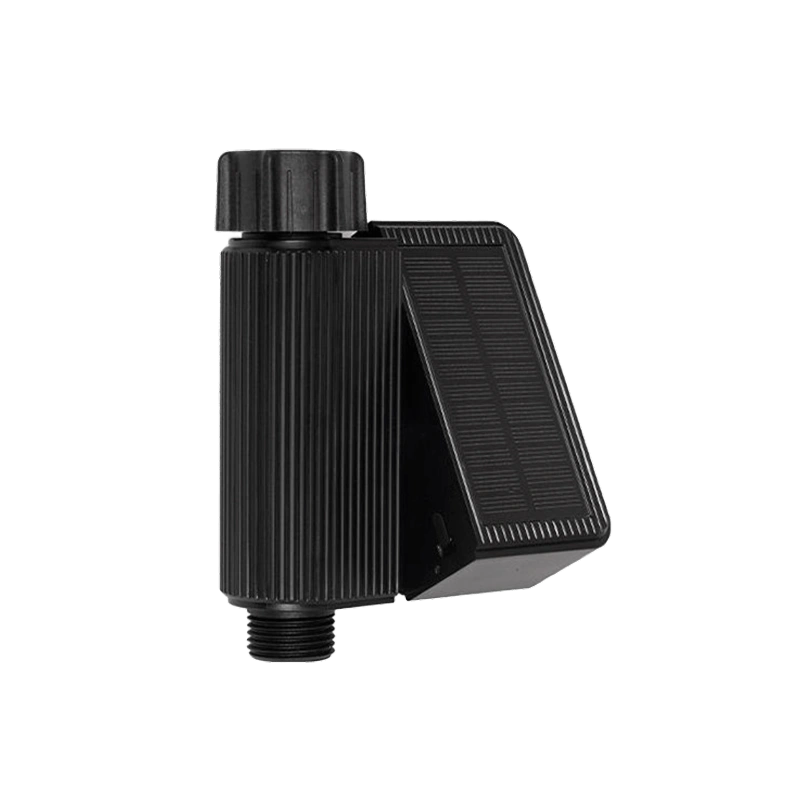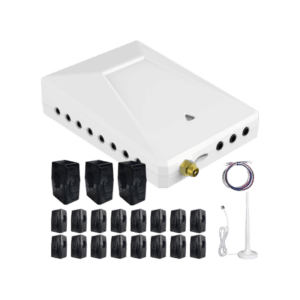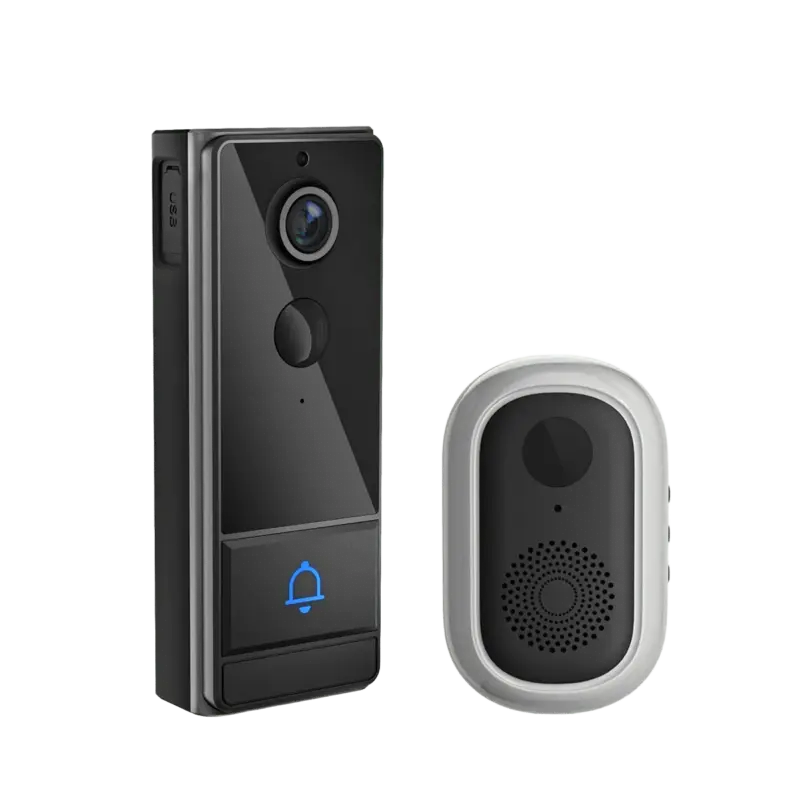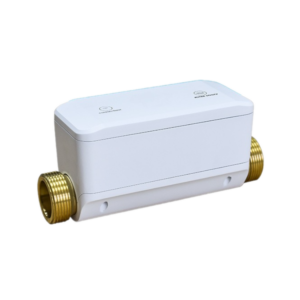ขณะที่เรากำลังก้าวเข้าสู่ปี 2024 การนำมิเตอร์อัจฉริยะมาใช้ทั่วโลกได้นำเสนอภาพวิวัฒนาการทางเทคโนโลยีและการผสานเข้ากับชีวิตประจำวันของเราอย่างชัดเจน มิเตอร์อัจฉริยะ ซึ่งเป็นรากฐานสำคัญของอินเทอร์เน็ตในทุกสิ่ง (IoT) ที่กำลังเติบโต ได้ก้าวข้ามบทบาทที่เป็นเพียงอุปกรณ์วัดสาธารณูปโภค ไปสู่บทบาทสำคัญในการทำให้บริการสาธารณูปโภคทั่วโลกเป็นดิจิทัล
ชีพจรโลกด้านการนำมิเตอร์อัจฉริยะมาใช้
ภายในสิ้นปี 2566 ทั่วโลกได้ติดตั้งมิเตอร์อัจฉริยะมากกว่า 1.06 พันล้านตัว ครอบคลุมมิเตอร์ไฟฟ้า มิเตอร์น้ำ และมิเตอร์แก๊ส ตามรายงาน “Global Smart Meter Market Tracker 2020-2030” ของ IoT Analytics ความสำเร็จครั้งนี้ไม่เพียงแต่เป็นก้าวสำคัญสู่การเปลี่ยนโครงสร้างพื้นฐานการจ่ายไฟฟ้าให้เป็นดิจิทัลเท่านั้น แต่ยังเน้นย้ำถึงบทบาทสำคัญของมิเตอร์อัจฉริยะในการใช้ประโยชน์จากข้อมูลเกือบเรียลไทม์สำหรับสาธารณูปโภคทั่วโลกอีกด้วย
อเมริกาเหนือซึ่งเป็นผู้นำตลาด มีตลาดมิเตอร์อัจฉริยะที่เติบโตเต็มที่ที่สุด โดยมีอัตราการเข้าถึงมิเตอร์ไฟฟ้าใกล้ถึง 77% การนำเทคโนโลยีมาใช้ในละตินอเมริกายังคงล้าหลังอย่างมาก ขณะที่บางประเทศและภูมิภาคในสหภาพยุโรปในเอเชียตะวันออกมีอัตราการเข้าถึงที่สูง เอเชียใต้ ละตินอเมริกา และแอฟริกา ถือเป็นภูมิภาคที่มีศักยภาพในการเติบโตสูง ซึ่งได้รับแรงผลักดันจากโครงการริเริ่มของรัฐบาลที่มุ่งเน้นการปรับปรุงโครงสร้างพื้นฐานระบบไฟฟ้าที่ล้าสมัยให้ทันสมัย และการส่งเสริมนโยบายด้านกฎระเบียบเพื่อส่งเสริมการใช้งานมิเตอร์อัจฉริยะ
เหตุใดเรื่องนี้จึงสำคัญ
การทำความเข้าใจศักยภาพการเติบโตภายในตลาดมิเตอร์อัจฉริยะระดับโลกและระดับภูมิภาคเป็นสิ่งสำคัญอย่างยิ่งสำหรับผู้ผลิตอุปกรณ์ (OEM) ซัพพลายเออร์ และผู้ให้บริการภายในห่วงโซ่คุณค่าของมิเตอร์อัจฉริยะ การระบุโอกาสในการปรับใช้อุปกรณ์ใหม่ๆ และการลงทุนในโครงการต่างๆ สามารถส่งผลกระทบอย่างมีนัยสำคัญต่อการวางแผนเชิงกลยุทธ์และการวางตำแหน่งทางการตลาด
รายงาน "Global Smart Meter Market Tracker 2020-2030" ฉบับปรับปรุงล่าสุดโดย IoT Analytics แสดงให้เห็นภาพอนาคตที่จะมีการติดตั้งอุปกรณ์อัจฉริยะมากกว่า 1.75 พันล้านเครื่องภายในปี 2030 ซึ่งคิดเป็นอัตราการเติบโตเฉลี่ยต่อปี (CAGR) ที่ 6% การเติบโตนี้ได้รับแรงหนุนจากภาคสาธารณูปโภคที่ให้ความสำคัญกับความยั่งยืนและการเปลี่ยนผ่านสู่ระบบดิจิทัลมากขึ้น ทำให้ตลาดมิเตอร์อัจฉริยะเป็นตลาดที่น่าจับตามองอย่างใกล้ชิด
อัตราการใช้งานมิเตอร์ไฟฟ้าอัจฉริยะในปัจจุบันสูงกว่ามิเตอร์ไฟฟ้าแบบใช้แก๊สและมิเตอร์น้ำมาก อย่างไรก็ตาม คาดการณ์ว่าจะมีการเปลี่ยนแปลงภายในปี 2573 โดยคาดว่ามิเตอร์ไฟฟ้าแบบใช้แก๊สและมิเตอร์น้ำอัจฉริยะจะเติบโตที่อัตราเติบโตเฉลี่ยต่อปี (CAGR) ที่ 10% และ 16% ตามลำดับ
IoT Analytics มีแผนที่จะเน้นตลาดย่อยของมิเตอร์อัจฉริยะแต่ละแห่ง โดยเริ่มจากมิเตอร์ไฟฟ้า แม้ว่าจะครอบคลุมอย่างครอบคลุมใน 52 ประเทศและ 5 ภูมิภาค รวมถึงตัวชี้วัดด้านการติดตั้ง การจัดส่ง รายได้ การเจาะตลาด และเทคโนโลยีการเชื่อมต่อก็ตาม
ภาพรวมตลาดมิเตอร์อัจฉริยะระดับโลก
ณ สิ้นปี 2566 มิเตอร์ไฟฟ้าอัจฉริยะได้เข้าสู่ตลาดมิเตอร์ทั่วโลกถึง 43% ซึ่งเป็นก้าวสำคัญที่ขับเคลื่อนโดยโครงการปรับปรุงระบบที่เริ่มต้นในอิตาลีและสหรัฐอเมริกาในช่วงปลายทศวรรษ 2000 และเร่งตัวขึ้นทั่วสหภาพยุโรปและเอเชียแปซิฟิกหลังปี 2553 ด้วยแรงสนับสนุนจากนโยบายด้านกฎระเบียบและแรงจูงใจทางการเงินจากรัฐบาล การเติบโตนี้จึงส่งเสริมให้บริษัทสาธารณูปโภคเปลี่ยนจากมิเตอร์แบบกลไกเป็นมิเตอร์อัจฉริยะ เพื่อปรับปรุงโครงสร้างพื้นฐานของโครงข่ายไฟฟ้าให้ทันสมัย
อย่างไรก็ตาม ไม่ใช่ทุกภูมิภาคที่กำลังพัฒนาให้ทันสมัยในอัตราเดียวกัน อเมริกาเหนือ ยุโรป และเอเชียตะวันออกมีอัตราการใช้ไฟฟ้าที่สูงกว่า แต่การนำไปใช้งานจริงนั้นแตกต่างกันไปในแต่ละประเทศ ขณะเดียวกัน โครงการมิเตอร์อัจฉริยะแบบครอบคลุมในละตินอเมริกา แอฟริกา และเอเชียใต้ก็มีความคืบหน้าอย่างช้าๆ แม้ว่าบางประเทศจะริเริ่มโครงการมิเตอร์อัจฉริยะขนาดใหญ่ในช่วงไม่กี่ปีที่ผ่านมา แต่ความซับซ้อนในการดำเนินการ การขาดนโยบายด้านกฎระเบียบ และอุปสรรคด้านต้นทุน ล้วนเป็นปัจจัยที่ทำให้การนำไปใช้งานจริงในวงกว้างล่าช้าออกไป
โดยรวมแล้ว แนวโน้มตลาดมิเตอร์อัจฉริยะมีแนวโน้มเป็นไปในเชิงบวก โดยมีการคาดการณ์ว่าอุปกรณ์ IoT เหล่านี้จะคิดเป็น 54% ของตลาดมิเตอร์ทั่วโลกภายในปี 2030
คำจำกัดความของมิเตอร์อัจฉริยะ
มิเตอร์อัจฉริยะคืออุปกรณ์ IoT อิเล็กทรอนิกส์ที่ใช้ในระบบมิเตอร์ของผู้ให้บริการสาธารณูปโภค (USP) เพื่อวัดค่าพารามิเตอร์ต่างๆ ขณะจ่ายไฟฟ้าให้กับผู้บริโภค มิเตอร์อัจฉริยะเป็นส่วนหนึ่งของโครงสร้างพื้นฐานการวัดขั้นสูง (AMI) ของ USP ซึ่งอำนวยความสะดวกในการสื่อสารแบบสองทาง ช่วยให้ระบบส่วนหน้าของสาธารณูปโภคสามารถรวบรวมข้อมูลและสื่อสารกับมิเตอร์ได้ ทำให้ได้ข้อมูลเชิงลึกแบบเรียลไทม์เกี่ยวกับคุณภาพพลังงาน ความผันผวนของแรงดันไฟฟ้า และไฟฟ้าดับในโครงสร้างพื้นฐานการจ่ายไฟฟ้าของ USP
ตลาดมิเตอร์อัจฉริยะและการนำระบบมาใช้ในระดับภูมิภาค
แม้ว่าข้อมูลตลาดในระดับประเทศจะให้ข้อมูลเชิงลึกที่ละเอียด แต่ต่อไปนี้คือภาพรวมของภูมิทัศน์ระดับภูมิภาคของการนำมิเตอร์อัจฉริยะมาใช้:
- อเมริกาเหนือเป็นผู้นำด้านการนำมิเตอร์อัจฉริยะมาใช้ โดยมีอัตราการเจาะตลาดใกล้ถึง 77% ภายในสิ้นปี 2566
- เอเชียแปซิฟิกถือเป็นตลาดที่มีความเป็นผู้ใหญ่เป็นอันดับสอง โดยขับเคลื่อนโดยการใช้งานทั่วประเทศในจีนและญี่ปุ่น
- ยุโรปอยู่ในอันดับที่สาม โดยแสดงให้เห็นอัตราการนำไปใช้ที่หลากหลายในแต่ละประเทศ
- ตะวันออกกลางและแอฟริกาพบกับผู้นำในซาอุดีอาระเบียและสหรัฐอาหรับเอมิเรตส์ที่กำลังผลักดันการดำเนินการต่อไป
- ละตินอเมริกาความล่าช้าในการใช้งาน เนื่องมาจากความลังเลของหน่วยงานกำกับดูแลที่ทำให้การเปิดตัวโครงการล่าช้า
มุมมองของนักวิเคราะห์ต่อตลาดมิเตอร์ไฟฟ้าอัจฉริยะ
แม้ว่าตลาดที่เติบโตเต็มที่ในอเมริกาเหนือ ยุโรป และเอเชียตะวันออกจะอยู่ในช่วงอิ่มตัว แต่ภูมิภาคต่างๆ เช่น เอเชียใต้ ละตินอเมริกา และแอฟริกา ยังคงมีศักยภาพการเติบโตที่ยังไม่ได้ถูกใช้ประโยชน์ ปัจจัยสำคัญที่ผู้มีส่วนได้ส่วนเสียควรพิจารณา ได้แก่ ความอิ่มตัวของตลาดในประเทศเศรษฐกิจพัฒนาแล้ว ความอ่อนไหวต่อต้นทุนในตลาดเกิดใหม่ การกระจายความเสี่ยงในห่วงโซ่อุปทาน และความไม่แน่นอนของนโยบายด้านกฎระเบียบ นวัตกรรมและแนวโน้มตลาดในอนาคต เช่น นวัตกรรมวงจรรวม (IC) เอจคอมพิวติ้ง และ TinyML ภายในมิเตอร์อัจฉริยะรุ่นที่สอง มีแนวโน้มที่จะช่วยลดแรงกดดันของเครือข่าย เพิ่มประสิทธิภาพการตอบสนองของโครงข่ายไฟฟ้าแบบเรียลไทม์ เสริมสร้างความยืดหยุ่น และปรับปรุงความปลอดภัยและความเป็นส่วนตัวของข้อมูล
การวิเคราะห์เชิงลึกนี้เน้นย้ำถึงเส้นทางการเปลี่ยนแปลงของตลาดมิเตอร์อัจฉริยะ จากองค์ประกอบสำคัญในความพยายามปรับปรุงระบบสาธารณูปโภคให้ทันสมัย สู่รากฐานสำคัญของระบบนิเวศ IoT ทั่วโลก เมื่อภูมิทัศน์เปลี่ยนแปลงไป โอกาสในการสร้างสรรค์นวัตกรรม การลงทุน และการมีส่วนร่วมตลอดห่วงโซ่คุณค่าของมิเตอร์อัจฉริยะก็จะเปลี่ยนแปลงตามไปด้วย



